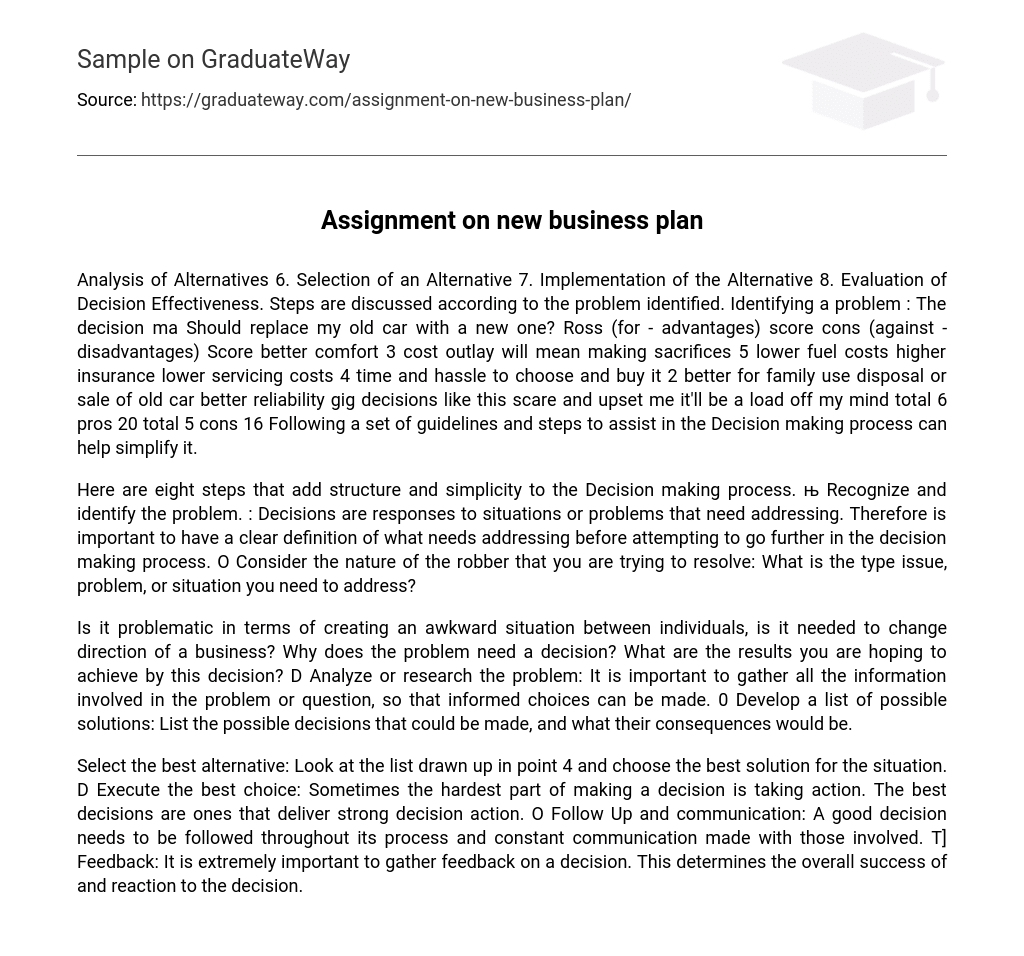Analysis of Alternatives 6. Selection of an Alternative 7. Implementation of the Alternative 8. Evaluation of Decision Effectiveness. Steps are discussed according to the problem identified. Identifying a problem : The decision ma Should replace my old car with a new one? Ross (for – advantages) score cons (against – disadvantages) Score better comfort 3 cost outlay will mean making sacrifices 5 lower fuel costs higher insurance lower servicing costs 4 time and hassle to choose and buy it 2 better for family use disposal or sale of old car better reliability gig decisions like this scare and upset me it’ll be a load off my mind total 6 pros 20 total 5 cons 16 Following a set of guidelines and steps to assist in the Decision making process can help simplify it.
Here are eight steps that add structure and simplicity to the Decision making process. њ Recognize and identify the problem. : Decisions are responses to situations or problems that need addressing. Therefore is important to have a clear definition of what needs addressing before attempting to go further in the decision making process. O Consider the nature of the robber that you are trying to resolve: What is the type issue, problem, or situation you need to address?
Is it problematic in terms of creating an awkward situation between individuals, is it needed to change direction of a business? Why does the problem need a decision? What are the results you are hoping to achieve by this decision? D Analyze or research the problem: It is important to gather all the information involved in the problem or question, so that informed choices can be made. 0 Develop a list of possible solutions: List the possible decisions that could be made, and what their consequences would be.
Select the best alternative: Look at the list drawn up in point 4 and choose the best solution for the situation. D Execute the best choice: Sometimes the hardest part of making a decision is taking action. The best decisions are ones that deliver strong decision action. O Follow Up and communication: A good decision needs to be followed throughout its process and constant communication made with those involved. T] Feedback: It is extremely important to gather feedback on a decision. This determines the overall success of and reaction to the decision.





